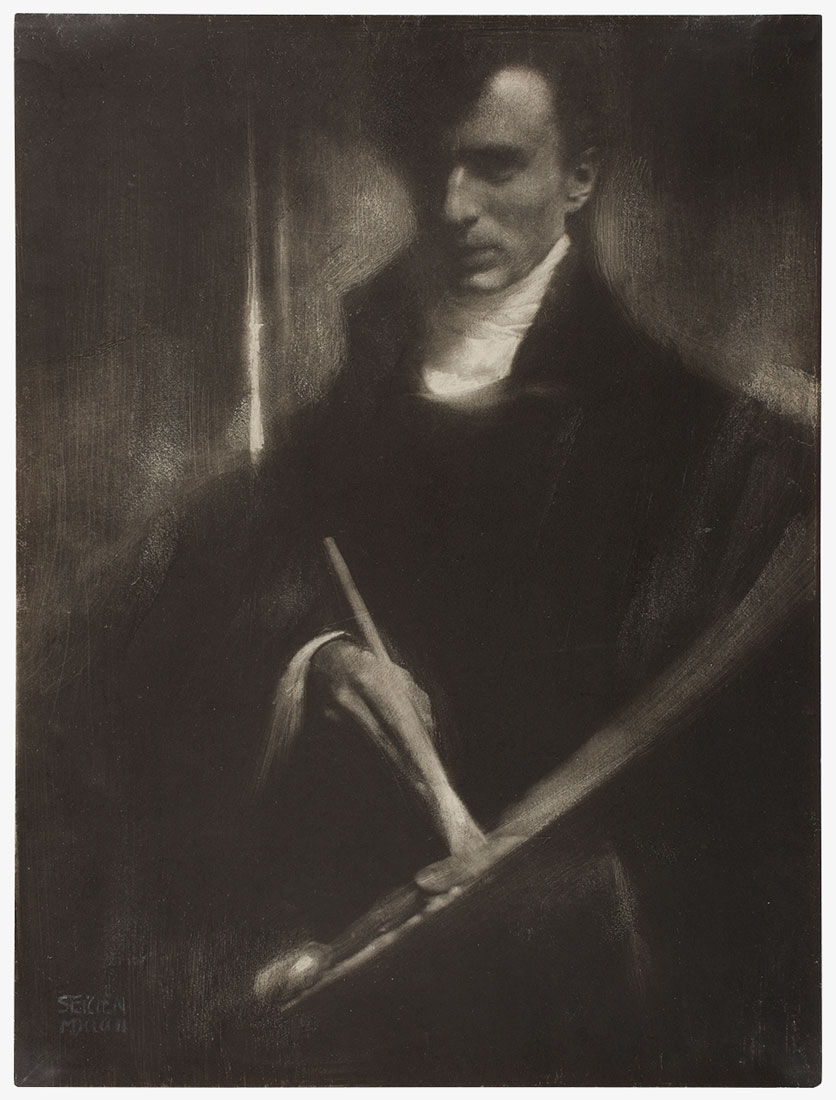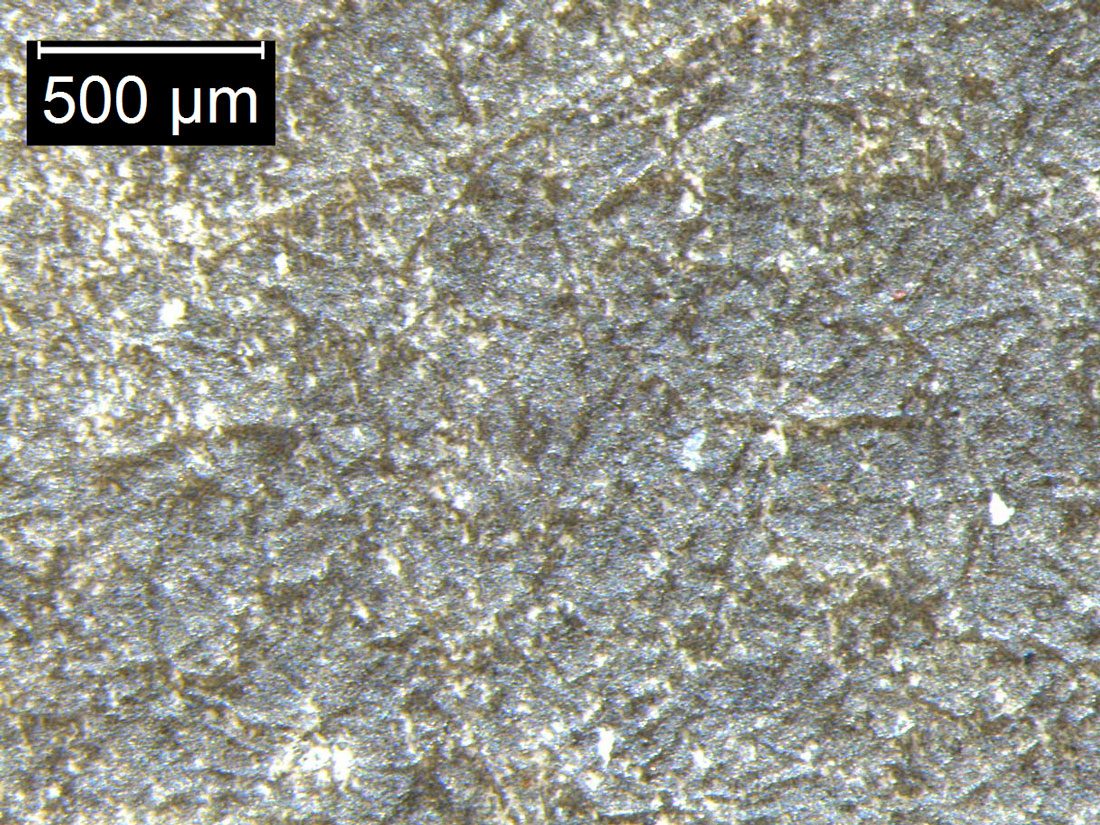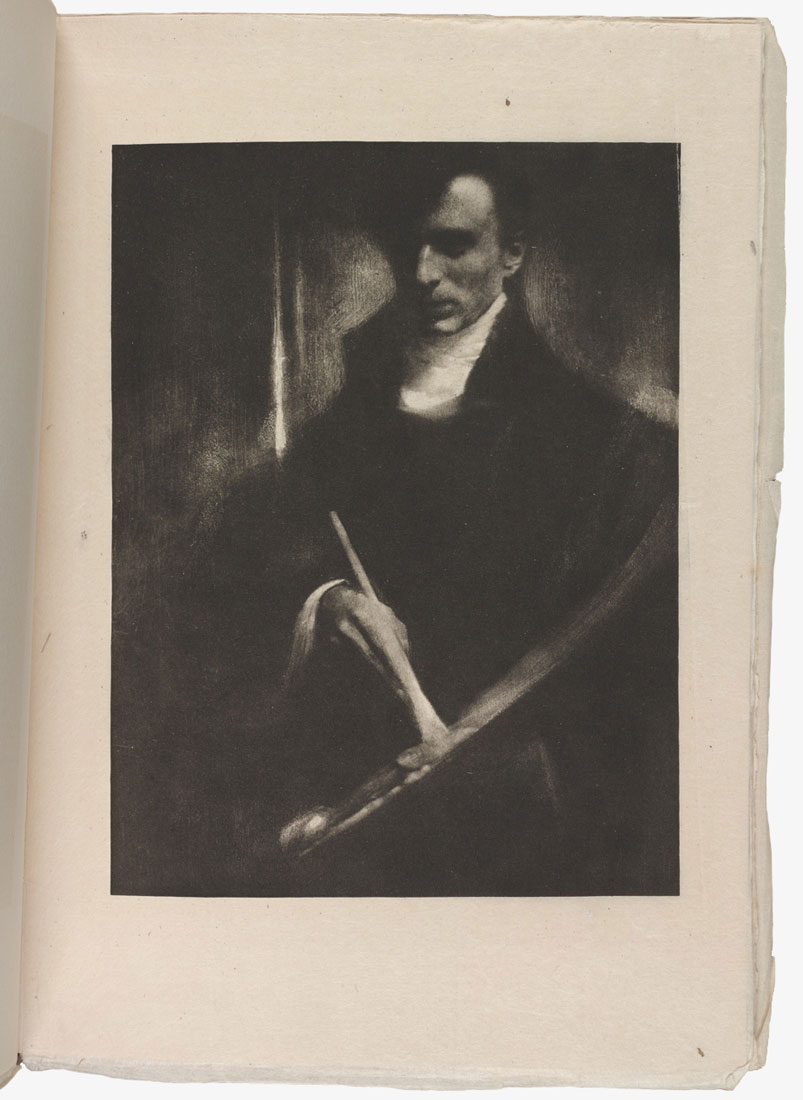-
 Recto of print
Recto of print -
 Photomicrograph showing print surface and modifications (scale bar is in millimeters)
Photomicrograph showing print surface and modifications (scale bar is in millimeters) -
 Photomicrograph showing print surface (scale bar is in micrometers)
Photomicrograph showing print surface (scale bar is in micrometers) -
 A photogravure reproduction of this work in Camera Work
A photogravure reproduction of this work in Camera Work -
 Exhibition view showing a print of the work in American Pictorial Photography (1902)
Exhibition view showing a print of the work in American Pictorial Photography (1902)
Edward Steichen (American, born Luxembourg, 1879–1973)
Self-Portrait with Brush and Palette, 1902
Alfred Stieglitz Collection, 1949.823
© 2016 The Estate of Edward Steichen/Artists Rights Society (ARS), New York
In 1901 Edward Steichen shared a studio with fellow photographer F. Holland Day. As he recounted in his autobiography, “I dressed up in one of Day’s stocks, draped his mantle around my shoulders, picked up a palette and brush, and posed in the mirror for what I thought was going to be photography’s answer to [Titian’s] ‘Man with a Glove.’”[1] He spent a year working to create a print that reflected his vision.
Self-Portrait with Brush and Palette is characterized by passages of moody darkness and dramatic highlights. The visible brushstrokes in the print are the result of the gum bichromate process, a favorite of Pictorialist photographers, although Steichen also altered the surface of the print after development. While Steichen considered himself both a painter and a photographer, he chose to represent himself with palette and brush, not with the seemingly more technical tool of the camera, modeling the belief successful fine art photography could only be achieved through painterly handicraft and compositional mastery.
Additional resources related to this object are to the right. Comprehensive material analysis can be found in the Object Research PDF.
[1] Edward Steichen, A Life in Photography (Doubleday, 1963), n.p.
Related Glossary Pages
Artists
Edward Steichen
As a teenager growing up in Milwaukee, Edward Steichen first encountered art photography in the read more
Processes
Gum Bichromate Print
Although employed largely by Pictorialist photographers between the 1890s and the 1930s, gum printing was read more
Journals
Camera Notes
In 1896, when New York’s two leading amateur camera clubs merged to create the Camera read more
Journals
Camera Work
Stieglitz had edited two previous publications—The American Amateur Photographer and Camera Notes—before deciding in 1902 read more
Themes
Materials Research
As part of the research related to this site, forty-four photographs from the Art Institute’s read more
Themes
Pictorialism
The international movement known as Pictorialism represented both a photographic aesthetic and a set of read more
Themes
The Photo-Secession
Following the model of other artistic secessions in Europe around the turn of the century—notably read more
Object Research
Object Research
Recto
VersoKey Sources
